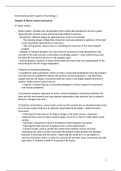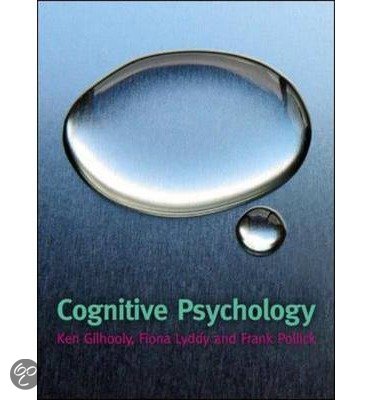Samenvatting
Cognitieve Psychologie samenvatting van hoofdstuk 8 tm 14
- Instelling
- Universiteit Van Amsterdam (UvA)
- Boek
- Cognitive Psychology
Dit is een samenvatting van het boek Cognitive Psychology van Gilhooly. Ik heb hiermee dit vak zelf gehaald met een 8, dus ik hoop dat jij hier ook zo'n hoog cijfer mee haalt!
[Meer zien]





